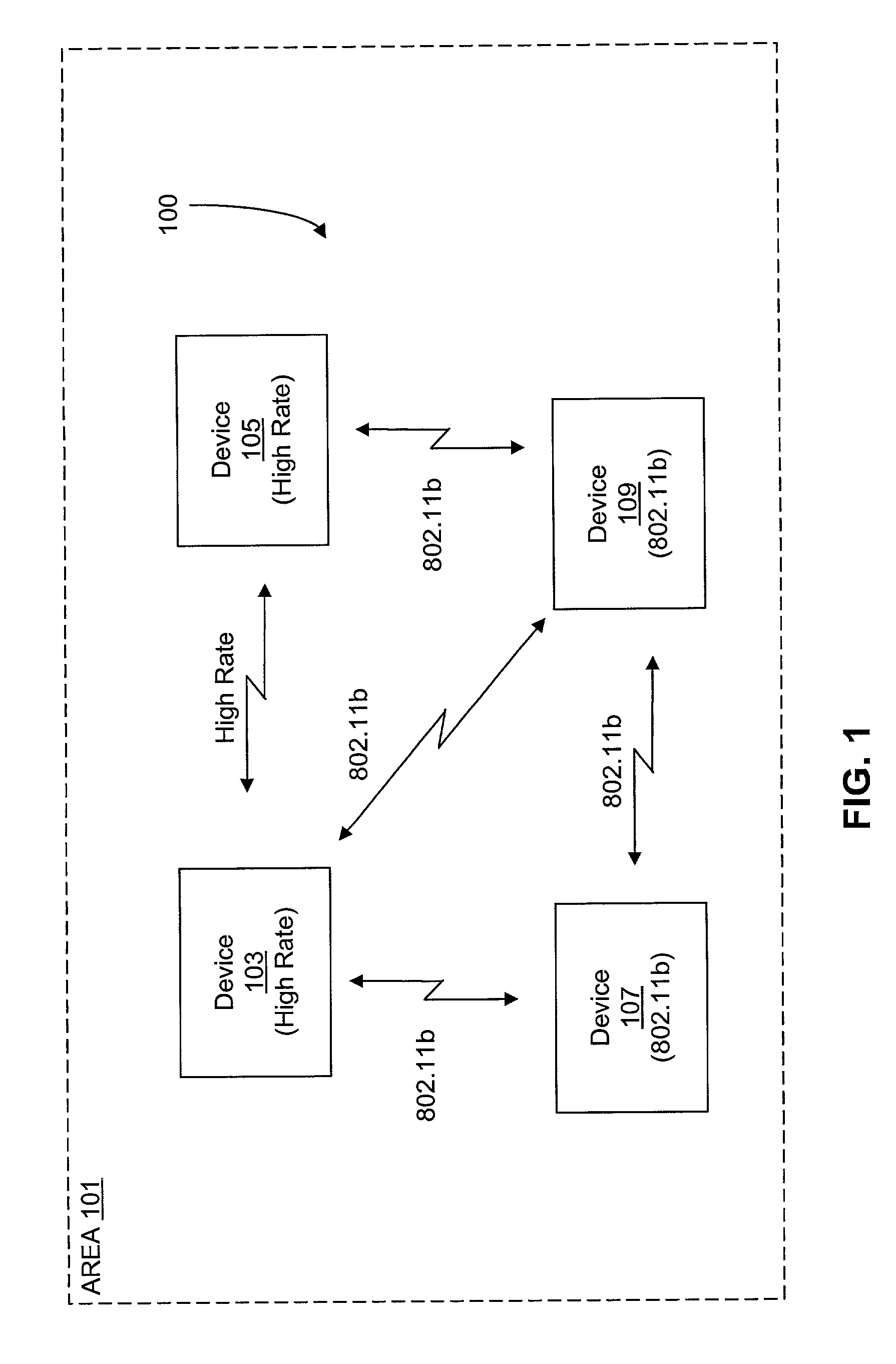Mixed waveform configuration for wireless communications
a wireless communication and waveform technology, applied in data switching networks, phase-modulated carrier systems, baseband system details, etc., can solve problems such as multi-path distortion, incompatibility of system implementation according to 802.11a and 802.11b standards, and inability to work together, so as to achieve the effect of reducing complexity
- Summary
- Abstract
- Description
- Claims
- Application Information
AI Technical Summary
Benefits of technology
Problems solved by technology
Method used
Image
Examples
Embodiment Construction
[0044] A configuration according to the present invention reuses the equalizer information obtained during acquisition of the single-carrier portion of the signal. In this manner, no OFDM preamble is required, although it still may be present for both convenience and fine tuning. The present disclosure describes a technique for providing complete continuity between the single-carrier and OFDM (multi-carrier) segments. This continuity is provided by specifying the transmit waveform completely for both the single-carrier and OFDM segments and specifying the transition. This enables complete continuity between the two signal segments, including AGC (power), carrier phase, carrier frequency, timing and spectrum (multi-path). In this manner, the signal does not have to be reacquired by the multi-path portion of the receiver since the information developed during the single-carrier portion (preamble / header) is valid and used to initiate capture of the multi-carrier portion. Maintaining an...
PUM
 Login to View More
Login to View More Abstract
Description
Claims
Application Information
 Login to View More
Login to View More - R&D
- Intellectual Property
- Life Sciences
- Materials
- Tech Scout
- Unparalleled Data Quality
- Higher Quality Content
- 60% Fewer Hallucinations
Browse by: Latest US Patents, China's latest patents, Technical Efficacy Thesaurus, Application Domain, Technology Topic, Popular Technical Reports.
© 2025 PatSnap. All rights reserved.Legal|Privacy policy|Modern Slavery Act Transparency Statement|Sitemap|About US| Contact US: help@patsnap.com



